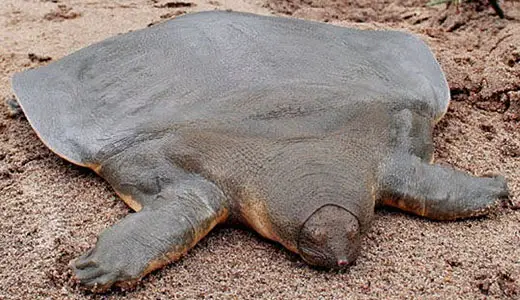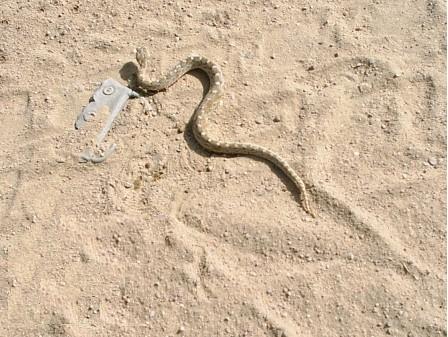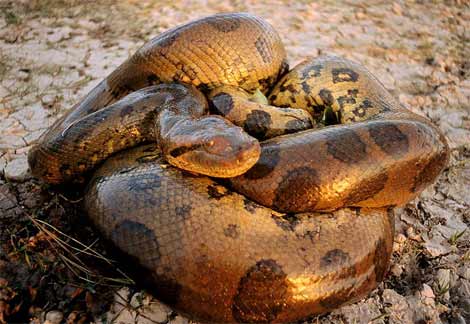Cantor’s giant softshell turtle
Cantor’s giant softshell turtle is native to Cambodia and Vietnam and is extremely rare, leading to the amazing turtle being recently classed as an endangered species. One of the largest species of turtle in the world, Cantor’s giant softshell turtle is also one of the strangest to look at. The majority of turtles have an exterior shell for protection against predators which is formed by the turtles ribs protruding from its body and forming the shell over its back. Cantor’s giant softshell turtle is different from most turtles in that it has no exterior shell but instead its ribs have formed a protective plating over its back but still under its skin.
Cantor’s giant softshell turtle is a freshwater turtle and is found in-land along the banks of freshwater streams and rivers. A recent discovery in 2007 found Cantor’s giant softshell turtle in abundance along the banks of Mekong river in Cambodia, this discovery has given wildlife officials a chance at saving this wonderful species of turtle from extinction.

Cantor’s giant softshell turtle
Cantor’s giant softshell turtle spends most of its life buried underground with only its eyes and nose protruding up into the world. Cantor’s giant softshell turtle is primarily carnivorous and feeds on fish and crustaceans. A powerful ambush predator, Cantor’s giant softshell turtle has a bite that can crush bone and has been described as one of the fastest striking animals in the world, even beating the King Cobra. Although mainly a carnivorous Cantor’s giant softshell turtle has been known to eats plants on occasion and can grow to a massive 2 meters in length (around 6 feet long!)
Cantor’s giant softshell turtle will likely lay its eggs around February/march time and lays between 20 – 30 eggs. Extensive projects are currently underway to try to save this magnificent creature.



that is one crazy looking turtle. i wish it wasn’t endangered. i’d want to see one. stupid people with their greed and obsession with killing things.
Ya I agree– I’d like to see this turtle, too.
Think about where this thing is found and the living conditions. It’s probably hunted for food by people that don’t have any thing else. They most likely don’t shop at the Safeway down the street.
Then it is the government of such place that’s to be blamed.